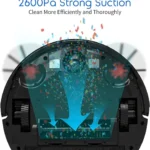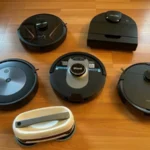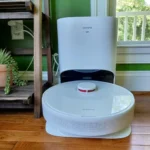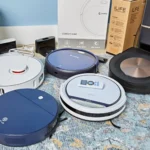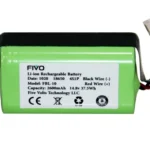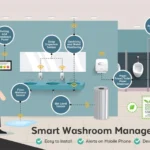You’ve purchased a smart vacuum cleaner and are now wondering about the best charging practices and how often you should charge it for optimal battery performance. With so many conflicting opinions out there, it can be difficult to determine the right approach. But fear not, we’ve done the research for you. In this article, we’ll explore the types of batteries used in smart vacuum cleaners, factors affecting battery performance, and best charging practices to ensure your vacuum cleaner’s battery life is prolonged. Additionally, we’ll provide tips on how to maintain and care for your vacuum cleaner’s battery for optimal performance. Let’s dive in!
Understanding Your Smart Vacuum Cleaner Battery
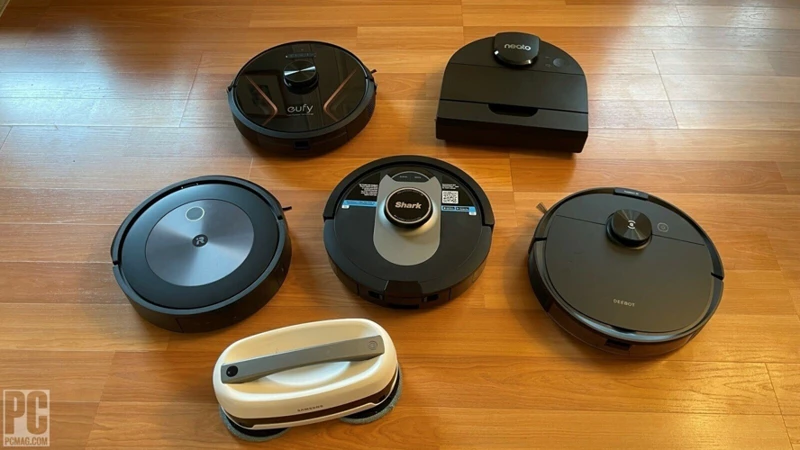
Understanding your smart vacuum cleaner battery is essential to ensure optimal and efficient performance. Without proper knowledge of your battery’s capabilities and limitations, you may reduce battery life, runtime, and overall efficiency. As such, it is important to know the different types of batteries used in smart vacuum cleaners and the factors that affect their performance. Additionally, understanding best practices for charging and tips for prolonging battery life can help you get the most out of your smart vacuum cleaner. Let’s dive deeper into this topic and learn more about the secrets of your vacuum cleaner’s battery power. To learn about the best charging practices, check out smart vacuum cleaner charging cycle.
Types of Batteries Used in Smart Vacuum Cleaners
Smart vacuum cleaners come with different types of batteries, and each one affects its overall performance, lifespan, and charging needs. Understanding the different battery types used in smart vacuum cleaners can help you make better informed decisions when charging your device. Here are the main types of batteries used in smart vacuum cleaners:
- Lithium-Ion (Li-ion) Batteries: These batteries are commonly used in smart vacuum cleaners due to their high energy density, which means they can store more energy in a smaller size compared to other batteries. They are also known for their longer lifespan and faster charging time. Smart vacuum cleaners with Li-ion batteries tend to be more expensive, but they offer better performance and durability.
- Nickel-Cadmium (Ni-Cd) Batteries: While these batteries are cheaper than Li-ion batteries, they have lower energy density, meaning they need to be replaced more frequently. They also have a shorter lifespan and slower charging time.
- Nickel-Metal Hydride (Ni-MH) Batteries: These batteries offer better performance and lifespan than Ni-Cd batteries, but they are not as efficient as Li-ion batteries. They also tend to lose charge when not in use, which means they may not hold their charge as long as other battery types.
Each battery type has its own charging requirements, and using the wrong type of charger can be detrimental to your smart vacuum cleaner’s performance and lifespan. For instance, using an incompatible charger or an alternative charging option can lead to battery damage or even fires. Always use the original charger that came with your smart vacuum cleaner, and avoid using third-party or unapproved charging devices.
Understanding the type of battery your smart vacuum cleaner uses and its charging requirements can help you prolong its lifespan and ensure optimal battery performance for a long time.
Battery Capacity and Runtime
Understanding your Smart Vacuum Cleaner Battery is crucial in making sure it performs optimally. One of the most important factors to take note of is its Battery Capacity and Runtime.
Battery Capacity
This refers to the amount of energy that the battery can store. It is typically measured in milliampere-hours (mAh) and the higher the number, the longer the battery life. When choosing a smart vacuum cleaner, it is important to consider the battery capacity especially if you have a large house or an area that requires extensive cleaning.
Battery Runtime
Battery Runtime, on the other hand, refers to the duration of time that the battery can power the vacuum cleaner before it needs to recharge. Smart vacuum cleaners with larger battery capacities have longer runtime before calling for a recharge.
In general, smart vacuum cleaners have a battery capacity ranging from 1800mAh to 5200mAh, with the battery runtime ranging from 60 minutes to 150 minutes depending on the weight of the vacuum cleaner, suction power, and battery capacity.
It is essential to note that battery runtime decreases with the age of the battery, usage, and cleaning mode. It is vital to charge your Smart Vacuum Cleaner for Optimal Battery Performance regularly.
To increase the life and performance of your smart vacuum cleaner battery, avoid continuous charging and follow recommended charging practices, which we discuss in detail in our article “Common Charging Mistakes for Smart Vacuum Cleaners.” Additionally, proper storage for your vacuum, discussed in our article “Smart Vacuum Storage Tips,” can also help prolong the life of your battery’s performance.
Factors Affecting Battery Performance
Several factors affect the performance of your smart vacuum cleaner battery, and understanding them can help you maximize its lifespan. Let’s take a closer look at these factors in the table below:
| Factor | Description |
|---|---|
| Usage frequency | The more you use your smart vacuum cleaner, the more quickly its battery will drain. Vacuuming daily will require more frequent charging than vacuuming once a week. |
| Surface type | If you use your smart vacuum cleaner on thick carpets, the battery will drain faster compared to using it on hardwood floors. This is because the vacuum uses more power to suck dirt and debris out of thicker carpets. |
| Cleaning mode | Some smart vacuum cleaners have different cleaning modes, such as turbo mode, which uses more battery power to clean more thoroughly. Using turbo mode will reduce the runtime of your vacuum cleaner battery. |
| Battery age | Over time, all batteries lose capacity and will therefore have a shorter runtime. If your smart vacuum cleaner battery is old, you may need to charge it more frequently. |
| Temperature | Batteries perform best at room temperature. If the battery gets too hot or too cold, it can impact its performance and lifespan. Avoid leaving your smart vacuum cleaner in direct sunlight or in a freezing car overnight. |
It’s important to note that while these factors can impact battery performance, charging your smart vacuum cleaner properly (as discussed previously) can help mitigate their effects and keep your vacuum running optimally for longer.
Best Charging Practices for Smart Vacuum Cleaners
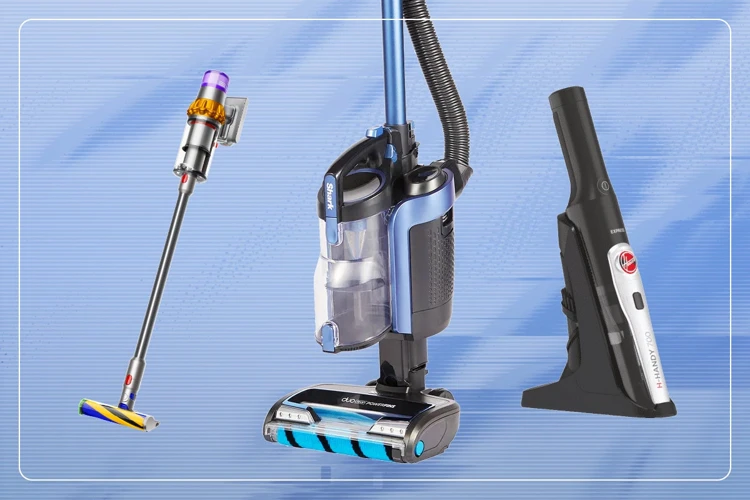
One of the most crucial aspects of ensuring optimal battery performance for your smart vacuum cleaner is how you charge it. Proper charging practices not only improve battery life but also maintain your vacuum’s cleaning efficiency. Additionally, it’ll help you avoid unpleasant surprises when you need your vacuum most. Let’s explore some expedient charging practices to help you keep your smart vacuum cleaner running optimally.
Charge Fully Before First Use
Charge Fully Before First Use
Before using your smart vacuum cleaner for the first time, it’s important to charge the battery fully. This ensures that the battery can operate at its maximum capacity from the very first use.
To charge your smart vacuum cleaner fully before the first use, follow these steps:
| Step | Instruction |
|---|---|
| Step 1 | Plug the charger into a power source |
| Step 2 | Connect the charger to your smart vacuum cleaner |
| Step 3 | Wait for the battery to charge fully (Note: The charging time may vary based on your model) |
| Step 4 | Turn on your smart vacuum cleaner |
It’s important to note that charging times may vary depending on the model of your smart vacuum cleaner. Check the user manual for specific charging instructions.
By fully charging the battery before the first use, you can ensure optimal battery performance and longer battery life. This is because lithium-ion batteries, commonly used in smart vacuum cleaners, have a limited number of charge cycles. By properly charging the battery from the beginning, you can help prolong its lifespan and overall performance.
So, before breaking out your new smart vacuum cleaner, make sure to charge the battery fully for optimal performance.
Charge Regularly
To maintain optimal performance of your smart vacuum cleaner’s battery, it’s essential to charge it regularly. It’s recommended that you charge the battery after each use or at least once a week, even if you haven’t used it. Here are some reasons why you should charge your smart vacuum cleaner regularly:
- Increase battery lifespan: Charging your smart vacuum cleaner regularly can help prolong its battery life. Most modern rechargeable batteries have a limited number of charging cycles. By charging it regularly, you can preserve the battery’s capacity and extend its lifespan.
- Always Ready to Use: One of the major advantages of having a smart vacuum cleaner is that you can set it to clean your home automatically. If you charge it regularly, it will always be ready to work when you need it, without worrying about whether it has sufficient power.
- Prevent battery memory effect: NiCd and NiMH batteries were known to develop a memory effect if stored without being fully charged, leading to a reduction in overall capacity. However, most modern lithium-ion batteries are less susceptible to this effect, but it’s still best practice to charge regularly to prevent any issues.
Regular charging is a crucial step in maintaining the optimal performance of your smart vacuum cleaner’s battery. By charging it regularly, you can increase its lifespan, prevent battery memory effect, and ensure it’s always ready to use. Remember to avoid overcharging and charging your vacuum cleaner for too long as these can harm the battery.
Avoid Overcharging
One of the key factors to consider when charging your smart vacuum cleaner’s battery is to avoid overcharging it. Overcharging your battery can not only lead to shorter battery life but can also increase the risk of damage to your device.
What is overcharging?
Overcharging is the process of charging your battery beyond its maximum capacity. This usually happens when your battery is left plugged in even after it has reached its full charge. This can lead to the battery being “cooked” and eventually reduced its capacity.
How to avoid overcharging?
To avoid overcharging, you need to follow some best practices. Firstly, make sure you check and follow the manufacturer’s recommendations on charging your device. Most smart vacuum cleaners come with an automatic shut-off once the battery is fully charged, but it’s still essential to unplug the device as soon as it reaches full capacity.
Secondly, use the correct charger provided by the manufacturer or a compatible one. Using an incorrect charger can lead to overheating and, in turn, battery damage.
Lastly, avoid leaving your smart vacuum cleaner plugged in for an extended period. Make sure you unplug the device once the battery is fully charged, and if possible, avoid charging overnight.
Below is a summary of some do’s and don’ts of charging your smart vacuum cleaner’s battery to avoid overcharging.
| Do’s | Don’ts |
|---|---|
| Follow manufacturer’s recommendations | Use incorrect charger |
| Unplug device once battery is fully charged | Leave device plugged in for long periods |
| Charge in a cool, dry environment | Charge in hot, humid environments |
By following the above best practices, you can ensure that you’re not overcharging your smart vacuum cleaner’s battery and prolong its lifespan.
Avoid Deep Discharging
One of the key factors affecting the battery life of your smart vacuum cleaner is deep discharging. Deep discharging is when the battery is used until it is almost completely drained, which can cause permanent damage to the battery cells. To avoid deep discharging, follow these tips:
- Set a Charge Level – Most smart vacuum cleaners come with a feature that allows you to set a charge level to prevent deep discharging. Set the charge level to a percentage that works for you and your cleaning routine.
- Monitor Battery Life – Keep an eye on the battery life of your smart vacuum cleaner and charge it before it gets too low. Don’t wait until the battery is almost fully drained before charging it.
- Avoid Consistent Low Battery Levels – Consistently running your smart vacuum cleaner on low battery levels can lead to deep discharging. Make sure to charge your vacuum cleaner regularly to avoid this.
- Use with Efficiency – One way to avoid deep discharging is to optimize the use of your smart vacuum cleaner. You can reduce the workload on the battery by optimizing the cleaning schedule, using efficient cleaning patterns, and limiting the cleaning area.
By avoiding deep discharging, you can help prolong the overall battery life of your smart vacuum cleaner and ensure optimal performance during each use.
Tips for Prolonging Battery Life and Performance
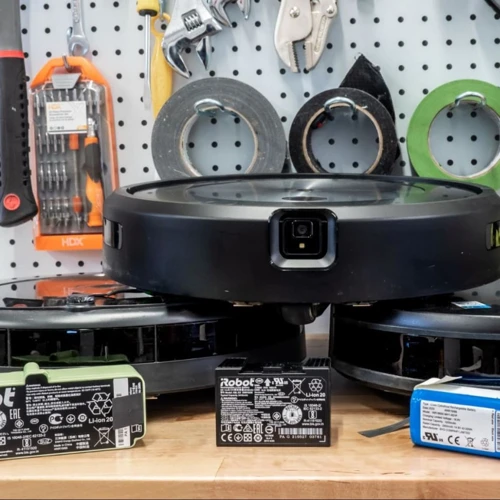
As a smart vacuum cleaner owner, you want to ensure that your device performs optimally and lasts for a long time. One of the best ways to achieve this is by taking good care of the battery. Your smart vacuum’s battery is an essential component that powers its operation. Without a healthy and functional battery, your vacuum will not clean efficiently or at all. In this section, we will explore various tips that will help you keep your smart vacuum cleaner battery in excellent condition for superior performance and extended longevity. So, let’s dive in and discover the secrets to managing your battery like a pro.
Store Properly
Proper storage of your smart vacuum cleaner is essential for maintaining battery performance and prolonging its lifespan. Here are some tips on how to store your vacuum properly:
- Clean the vacuum: Before storing your smart vacuum cleaner, make sure to clean it thoroughly. Remove any debris, dust, or hair from the filters, brush rolls, and other parts of the vacuum. This will prevent any buildup that could affect the vacuum’s battery life.
- Remove the battery: If your smart vacuum cleaner allows you to remove the battery, it’s best to take it out before storing. This ensures that you won’t accidentally overcharge or damage the battery while the vacuum is in storage.
- Store in a cool, dry place: Avoid storing the vacuum in a location with extreme temperatures or humidity levels. These conditions can damage the vacuum’s battery and components. Instead, choose a cool, dry place such as a closet or pantry.
- Avoid direct sunlight: Exposing your smart vacuum cleaner to direct sunlight can cause the battery to degrade more quickly. It’s best to store the vacuum in a shaded area.
- Charge the battery: Before storing the vacuum, make sure the battery is charged to at least 50%. This helps to prevent the battery from discharging completely while in storage, which can damage the battery over time.
- Use the original packaging: If possible, store the smart vacuum cleaner in its original packaging. This will provide extra protection against dust, moisture, and other environmental factors that can damage the vacuum’s battery.
- Check the battery periodically: Even if you’re not using the vacuum on a regular basis, it’s still important to check the battery periodically to ensure that it’s holding a charge. If you notice that the battery is losing its charge more quickly than usual, it may be time to replace the battery.
By following these tips, you can ensure that your smart vacuum cleaner remains in optimal condition and its battery performance is maximized for years to come.
Use the Right Power Source
Using the proper power source is crucial for the optimal performance and longevity of your smart vacuum cleaner’s battery. Make sure to refer to your product manual to determine the recommended power source for your specific model.
Table 1: Smart Vacuum Cleaner Power Sources
| Power Source | Advantages | Disadvantages |
|---|---|---|
| Wall Outlet | Provides consistent power and a reliable energy source. | The cord can be cumbersome and may limit mobility during cleaning. |
| Battery Pack | Allows for more mobility during cleaning and no need to be tethered to a wall outlet. | Battery packs may need to be replaced frequently and may not provide consistent power during use. |
| USB Port | Convenient for charging and easy to find a power source. | The power output may not be consistent or may not provide enough power to fully charge the battery. |
Using the wrong power source can damage the battery and reduce its lifespan. Additionally, using an unapproved power source can void the warranty on your smart vacuum cleaner. It’s important to note that some models may come with a specific charger and using a different charger or power source can cause damage to the battery.
To ensure you’re using the proper power source, it’s recommended to purchase accessories directly from the manufacturer or an authorized dealer. This way, you can be sure you’re using the right power source and accessories specifically designed for your smart vacuum cleaner model.
Using the right power source is essential for maintaining the longevity and performance of your smart vacuum cleaner’s battery. Refer to your product manual for the recommended power source and purchase accessories from authorized dealers to ensure you’re using the proper equipment.
Clean and Maintain Your Smart Vacuum Cleaner
To ensure the longevity and optimal performance of your smart vacuum cleaner battery, it’s essential to keep your device clean and well-maintained. Here are some tips to help you with that:
1. Regularly Empty the Dustbin: A full dustbin can cause blockages in the device and lead to a decline in vacuum suction. Empty your dustbin after each use, especially if it’s full.
2. Clean the Filters: Most smart vacuum cleaners come with filters that capture dirt and dust particles. Over time, these filters can become clogged and hinder the vacuum’s performance. Clean or replace the filters at least once a month or as recommended by the manufacturer.
3. Check the Brushroll: The brushroll is responsible for picking up debris, hair, and pet fur from the floors. Check and clean the brushroll regularly to prevent clogs and improve performance.
4. Keep the Charging Contacts Clean: The charging contacts are where the smart vacuum cleaner connects to the charging dock. Keep them clean and free from dirt, dust, and debris to ensure the device charges correctly.
5. Store Your Smart Vacuum Cleaner Properly: Store your device in a clean, dry, and well-ventilated area. Ensure it’s not exposed to direct sunlight or extreme temperatures that could damage the battery.
In addition to these cleaning and maintenance tips, it’s important to follow the manufacturer’s instructions for cleaning and maintaining your smart vacuum cleaner. This will help prolong the life of your device and ensure it performs optimally every time you use it.
Answering Common Questions About Smart Vacuum Cleaner Batteries
As smart vacuum cleaners become more popular, questions arise about their batteries. Users want to know how long they can rely on their device, whether they can replace the battery, and how to know when to charge it. In this section, we address common concerns from confused users and provide clear answers. So let’s dive in and clear up the perplexity around smart vacuum cleaner batteries!
Can You Replace the Battery in a Smart Vacuum Cleaner?
Replacing Smart Vacuum Cleaner Batteries:
One of the most common concerns for buyers of smart vacuum cleaners is the reusability of their batteries. While there are several factors that affect battery life, such as usage frequency, charging habits, and environmental factors, it’s important to know if you can replace your smart vacuum cleaner’s battery.
To help you out, we have prepared a table that shows whether some of the most popular smart vacuum cleaner brands offer battery replacements.
| Brand | Battery replacement option |
|---|---|
| Dyson | Yes, available for purchase on the official website |
| iRobot | Yes, available for purchase on the official website |
| Shark | Yes, available for purchase on the official website |
| Xiaomi | Yes, available for purchase on the official website |
| Eufy | Yes, available for purchase on the official website |
| Ecovacs | Yes, available for purchase on the official website |
As you can see, all of the popular brands listed above offer battery replacement options, and you can purchase them from their respective official websites. This means that even if your smart vacuum cleaner battery does not perform optimally, you do not need to replace the entire vacuum cleaner. Instead, you can just change the battery and have your vacuum cleaner working like new again.
It’s worth noting that different brands have different battery life and charging mechanisms. It’s important to choose the right replacement battery for your specific model to ensure optimal performance. Some batteries may require a professional to install, while others can be easily replaced by the user.
Conclusion:
If you are worried about your smart vacuum cleaner’s battery life, it is good to know that you can replace it if necessary. With proper care and charging habits, however, you can prolong the life of your battery and reduce the need for replacement.
How Long Will a Smart Vacuum Cleaner Battery Last?
When it comes to determining how long a smart vacuum cleaner battery will last, several factors come into play. These include the type of battery, the capacity of the battery, and the model of the vacuum cleaner.
Most smart vacuum cleaners have either lithium-ion or nickel-metal hydride (NiMH) batteries. Lithium-ion batteries tend to have a longer lifespan and higher energy density, while NiMH batteries require more frequent charging but are more affordable.
The table below shows the average battery life expectancy for popular smart vacuum cleaner models:
| Vacuum Cleaner Model | Battery Life Expectancy |
|---|---|
| iRobot Roomba 980 | 2 years |
| Neato Botvac D7 Connected | 3-5 years |
| Shark IQ Robot Vacuum | 2-3 years |
| Eufy RoboVac 11S | 1-2 years |
It’s important to note that battery life expectancy can vary depending on usage and maintenance. Regular charging and proper storage can help prolong the lifespan of a smart vacuum cleaner battery. Additionally, minimizing deep discharging and avoiding overcharging can also help optimize battery performance.
If you notice a significant decrease in battery life or performance, it may be time to replace the battery in your smart vacuum cleaner. While some models allow for battery replacement, others require the entire unit to be replaced. It’s important to consult your vacuum cleaner’s user manual or contact the manufacturer for specific instructions on battery replacement.
How Can You Tell When a Smart Vacuum Cleaner Battery Needs Charging?
It’s important to know when your smart vacuum cleaner needs to be charged to ensure optimal battery performance. Here are some ways you can tell if your smart vacuum cleaner battery needs charging:
| Signs | Explanation |
|---|---|
| Low power indicator light | Many smart vacuum cleaners have a light that turns on when the battery is low. This is usually accompanied by a beep or alert sound. |
| Decreased suction power | If your smart vacuum cleaner doesn’t seem to be picking up as much dirt as usual, it could be a sign that the battery is running low. |
| Shortened runtime | If you notice that your smart vacuum cleaner’s battery isn’t lasting as long as it used to, it’s likely time to recharge it. |
| Slow movement | A low battery can cause your smart vacuum cleaner to move more slowly than usual, or even stop moving altogether. |
Be sure to charge your smart vacuum cleaner battery as soon as you notice these signs to keep it functioning properly. And remember, following the best charging practices can help prolong the life of your battery and keep your smart vacuum cleaner working efficiently.
Conclusion
In conclusion, keeping your smart vacuum cleaner well-charged is crucial for optimal battery performance. A fully charged battery ensures that your cleaner is able to function efficiently and effectively. Understanding the type of battery used in your smart vacuum cleaner and its capacity and runtime is important for determining the best charging practices.
To extend the life of your smart vacuum cleaner battery, it is important to charge it regularly and avoid both overcharging and deep discharging. Properly storing your vacuum cleaner, using the right power source, and cleaning and maintaining it can also help prolong its battery life.
If you’re wondering whether you can replace the battery in your smart vacuum cleaner, the answer is yes, but it may depend on the brand and model. Be sure to check the manufacturer’s guidelines for replacing the battery.
The lifespan of a smart vacuum cleaner battery can vary depending on usage and care, but with proper charging and maintenance, it can last for several years. Monitoring the battery’s charge level and charging it when necessary is the best way to ensure that it does not run out of power in the middle of a cleaning cycle.
Overall, following the best charging practices and taking care of your smart vacuum cleaner can help ensure that it continues to function at its best, providing you with the clean floors you desire with minimal interruption.
Frequently Asked Questions
Can Smart Vacuum Cleaner batteries be charged while in use?
No, it is not recommended to charge the battery while in use. This can cause damage to the battery and the vacuum cleaner.
How long should I charge my Smart Vacuum Cleaner battery?
The charging time may vary depending on your model, but it is recommended to charge it fully before first use and for at least 4-6 hours after each use.
Can I overcharge my Smart Vacuum Cleaner battery?
Yes, it is possible to overcharge the battery if left plugged in for extended periods. This can lead to reduced battery life and performance.
Can I use non-branded batteries on my Smart Vacuum Cleaner?
No, it is recommended to only use branded batteries that are compatible with your particular model. Using non-branded batteries can cause damage to your vacuum cleaner.
How often should I use my Smart Vacuum Cleaner?
It is recommended to use your Smart Vacuum Cleaner at least once a week to maintain optimal battery life and performance.
What is the typical lifespan of a Smart Vacuum Cleaner battery?
The lifespan may vary depending on usage and maintenance, but a well-maintained battery can last up to 2-3 years.
How can I tell if my Smart Vacuum Cleaner battery needs charging?
Most Smart Vacuum Cleaners have an indicator light that will turn on when the battery is low and needs charging.
Can I leave my Smart Vacuum Cleaner plugged in all the time?
No, it is recommended to unplug the charger once the battery is fully charged to avoid overcharging.
What is the best way to store my Smart Vacuum Cleaner?
Store your vacuum cleaner in a cool, dry place and avoid exposing it to extreme temperatures or direct sunlight. Remove the battery before storing for extended periods.
What should I do if my Smart Vacuum Cleaner battery stops working?
If your battery stops working, contact the manufacturer for a replacement or repair.

